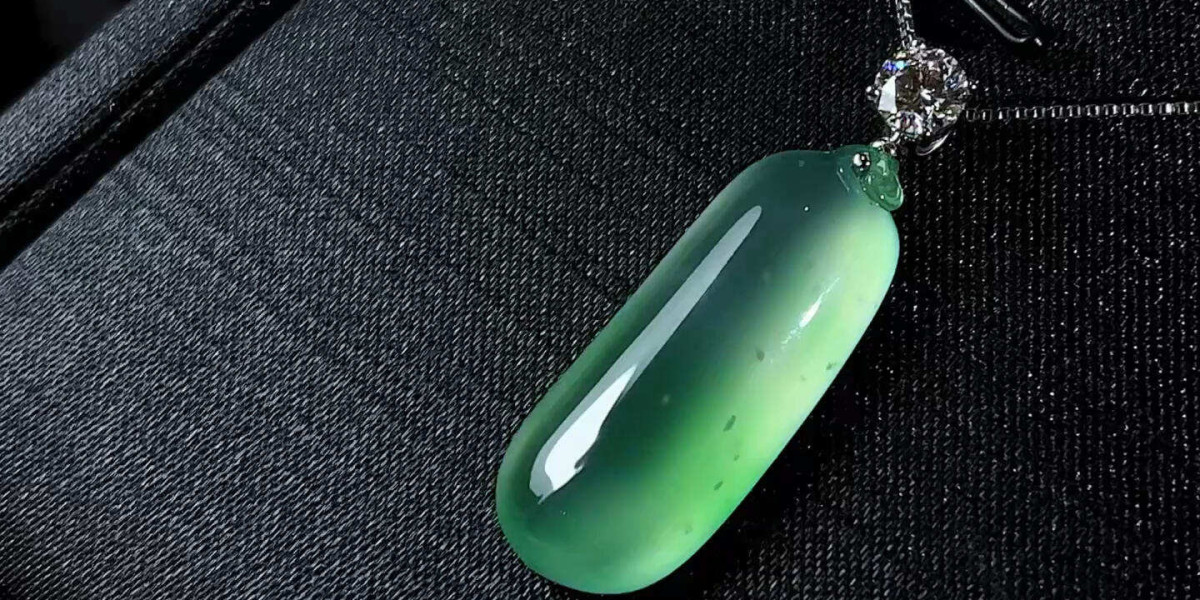The jade bracelet has been cherished for centuries, admired not only for its captivating beauty but also for its deep cultural significance. Worn by royalty, treasured in family heirlooms, and gifted as a token of love and protection, jade bracelets hold a unique place in both fashion and tradition. The allure of jade lies in its distinctive green hues, its smooth texture, and its reputation as a gemstone that carries good fortune and harmony to those who wear it. Whether chosen for its elegance or its symbolic meaning, a jade bracelet remains an accessory that never goes out of style.
Jade is a gemstone that comes in two main varieties: nephrite and jadeite. Nephrite is often found in creamy white, green, or brownish colors, while jadeite is more prized for its vibrant emerald greens and sometimes lavender shades. The most valuable type, Imperial Jade, is a translucent emerald-green jadeite that commands the highest prices in the gemstone world. These bracelets are often carved from a single piece of jade, ensuring that the beauty of the stone remains uninterrupted, or they may be set with gold or silver accents to add an extra layer of luxury.
For centuries, jade bracelets have been more than just ornamental. In Chinese culture, jade is considered the “Stone of Heaven” and is believed to bring peace, protection, and prosperity. Wearing a jade bracelet is thought to ward off negative energies, strengthen relationships, and even promote physical healing. Many people wear them daily as a protective talisman, while others bring them out on special occasions to complement traditional attire. In other cultures, jade also carries spiritual and symbolic meanings, making it a globally respected gemstone.
Jade bracelets are crafted in various styles to suit different tastes. The most traditional style is the solid bangle, which is typically round or slightly oval and polished to a flawless shine. These bangles are often given as gifts for milestones such as weddings, anniversaries, or the birth of a child. Another popular style is the hinged or segmented bracelet, which incorporates jade pieces connected by metal links. Modern designers also blend jade with diamonds, pearls, or other gemstones to create contemporary designs that still honor the stone’s heritage.
When selecting a jade bracelet, quality is key. Factors such as color, translucency, and texture determine the value of jade. The finest jade has a rich, even color and a smooth, glassy surface without visible cracks or blemishes. Translucent jade is especially prized, as light passes through the stone to reveal its inner glow. Because high-quality jade can be expensive, buyers should be cautious and purchase only from reputable sources. There are many imitations and treated stones on the market, so verifying authenticity through certification is important for collectors and enthusiasts alike.
Caring for a jade bracelet ensures that it remains beautiful for generations. While jade is relatively durable, it can still chip or crack if struck against a hard surface. It is best to remove your bracelet when engaging in strenuous activities or handling heavy objects. Cleaning jade is simple—use warm water, a mild soap, and a soft cloth to gently remove any dirt or oils. Avoid harsh chemicals, ultrasonic cleaners, or excessive heat, as these can damage the stone’s structure and color. When not wearing it, store your jade bracelet in a padded jewelry box or wrapped in a soft cloth to prevent scratches.
Jade bracelets are also deeply tied to meaningful gift-giving traditions. In many Asian cultures, gifting jade to a loved one is seen as a gesture of protection and care. Parents may give their children jade bracelets as a symbol of safety and well-being, while romantic partners exchange them as tokens of everlasting love. Because jade is believed to absorb the energy of its wearer, passing down a jade bracelet from generation to generation carries sentimental value, making it a treasured family heirloom.
The appeal of jade bracelets extends beyond their cultural roots into the world of modern fashion. Today, jade is embraced by global designers who incorporate it into minimalist jewelry, bohemian styles, and luxury accessories. Celebrities and influencers have helped revive jade’s popularity, wearing it in both casual and formal settings. Its versatility allows it to pair beautifully with both modern outfits and traditional garments, bridging the gap between heritage and contemporary style.
Jade bracelets also carry personal meaning for many wearers. Some choose them for spiritual reasons, believing the stone’s energy helps them maintain emotional balance and clarity. Others wear jade simply because they are drawn to its calming beauty. Whether worn for symbolic purposes or purely for aesthetic pleasure, a jade bracelet is a personal statement—one that reflects the wearer’s style, beliefs, and connection to history.
In recent years, the demand for jade has grown worldwide, leading to increased appreciation for sustainable and ethical sourcing. Responsible jewelers are now focusing on sourcing jade in ways that respect both the environment and local communities. This approach ensures that future generations will continue to enjoy the beauty and meaning of jade without compromising the integrity of its origins.
Ultimately, a jade bracelet is much more than a piece of jewelry. It is a link to tradition, a symbol of protection, and an enduring expression of elegance. Whether you inherit one from a loved one, purchase it as a personal treasure, or receive it as a heartfelt gift, a jade bracelet holds a timeless charm that will never fade. Its deep connection to culture and its ability to adapt to modern trends make it one of the most versatile and meaningful accessories you can own.







